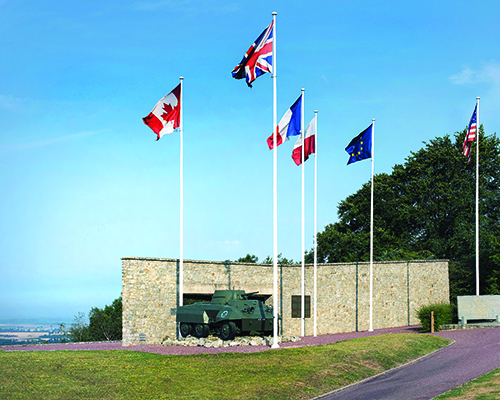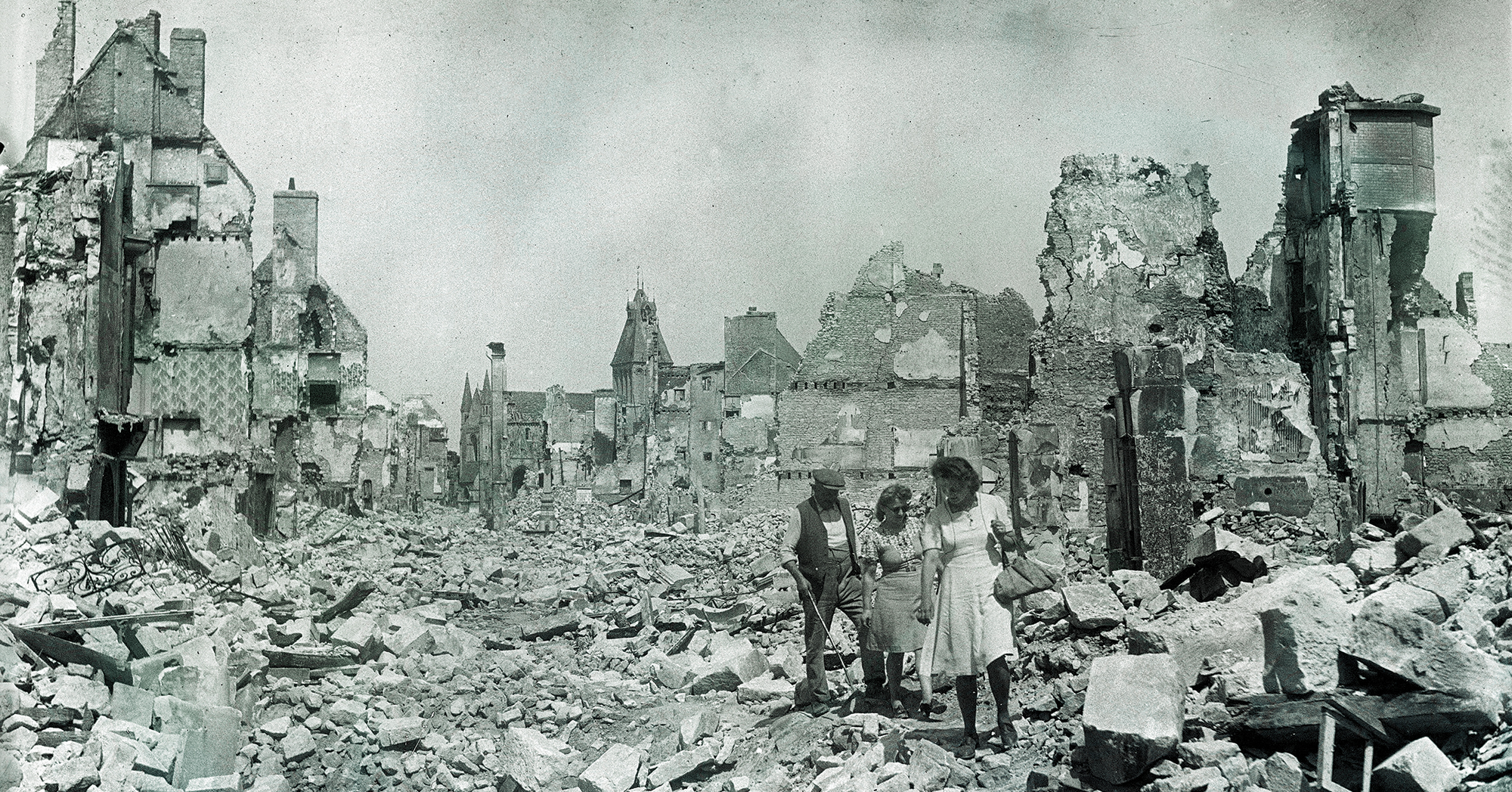The Polish 1st Armored Division, commanded by Maj. Gen. Stanislaw Maczek, operated under the II Canadian Corps. The division largely comprised Polish soldiers who’d managed to escape from their homeland after it was jointly crushed by Germany and the Soviet Union in the fall of 1939. Others were volunteer Poles who had previously immigrated to Europe and North America. The division was equipped with mostly British kit, but also some American equipment, notably Sherman tanks. The troops wore British uniforms and rank insignia with distinctive Polish formation badges. They also retained their original unit designations.wo months after the June 6, 1944, Allied invasion of Normandy the 15 or so surviving divisions of German Army Group B in France faced potential annihilation from a double envelopment. By August 17 the Canadian First Army, the northern arm of the pincer, had closed in on Falaise, while the U.S. Third Army, the southern arm, was closing in on Argentan. But for the 13-mile gap between those towns, the encirclement was complete. Continually pounded by Allied aircraft and artillery, German units desperately tried to flee through the bottleneck via the only two roads still open to them. The Mont-Ormel ridge was the key piece of high ground in the gap.
Just after noon on August 19 the division’s Battlegroup Zgorzelski captured Hill 262, the northern end of the Mont-Ormel ridge. In the process the Poles collided with and destroyed a long column of German tanks and other vehicles. Although the Falaise Pocket was technically closed, the Allies were not astride the German escape routes in sufficient strength to seal them off. Late that afternoon the division’s Battlegroup Koszutski also closed on Hill 262, yet at day’s end the bulk of the Polish 1AD found itself surrounded on Mont-Ormel, cut off from the rest of II Canadian Corps. Fortunately, they did have a Canadian Royal Artillery forward observer with them, who remained in radio contact with II Corps’ guns. Throughout the night of August 19–20 the Poles defended their high ground perimeter with a force of some 1,500 infantry, 80 tanks and 20 anti-tank guns.
The Poles took continuous artillery and mortar fire from almost every direction as German paratroop infantry and Panzergrenadiers closed in on their perimeter
When the mist lifted on the morning of the 20th, the Poles had clear fields of fire and observation across the surrounding plain. As thousands of German vehicles crawled northeastward out of the pocket, the Polish and Canadian artillery pounded away at them. Exasperated by the casualties his troops were taking, German Seventh Army commander Oberstgruppenführer Paul Hausser ordered the elimination of the Polish position. At 3 p.m. the 1AD perimeter came under heavy attack from the 2nd SS Panzer Division. The Poles took continuous artillery and mortar fire from almost every direction as German paratroop infantry and Panzergrenadiers closed in on their perimeter.
Under relentless attack the Polish perimeter compressed but did not break. Meanwhile, the fierce pressure on the Poles allowed the Germans limited freedom to dribble out of the trap. By the night of August 20–21 some 300 Polish soldiers lay wounded without adequate medical care, while 800 German prisoners grew restless within the Polish perimeter. Ammunition was almost completely gone. With only about 110 able-bodied men left, five shells per gun and 50 bullets per man, the Poles were no longer capable of serious interference with the German withdrawal. Regardless, they persisted.
Pressure on the Mont-Ormel perimeter continued through the afternoon of August 21. Around 11 a.m. the Germans launched a near-suicidal failed attack straight into the Polish machine guns. Finally, at 1 p.m. the lead elements of the Canadian Grenadier Guards reached Mont-Ormel, having fought their way forward for more than five hours. By that evening the Allies declared the Falaise Pocket closed, as tanks of the Canadian 4th Armored Division linked up with the Polish forces.

Polish losses for the operation totaled 466 killed in action, 1,002 wounded and 114 missing—some 20 percent of the division’s combat strength. In the aftermath Royal Canadian Engineers erected a sign on the summit of Hill 262 reading simply, A Polish Battlefield. The sad irony for the soldiers of the Polish 1AD is that while they were fighting so gallantly at Mont-Ormel in August 1944, the Germans were systematically grinding their occupied nation’s capital to rubble in response to the Warsaw Uprising.
Today Mont-Ormel hosts a memorial to Polish forces as well as an excellent visitor center and museum with displays in four languages. Hill 262 offers a panoramic view of the valley of the Dives River and the Falaise Gap. An animated map helps visitors retrace the various stages of the battle. MH





